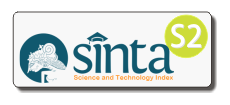Acceleration of the Banking Sector and Economic Growth: Effectiveness of Economic Recovery Strategies Post-Covid-19
DOI:
https://doi.org/10.14421/grieb.2024.121-01Keywords:
Systemic Risk, economic growth, Covid-19, business cycle, government policiesAbstract
The banking sector around the world is under great pressure due to the current state of the Covid-19. This study investigates how Covid-19 impacts systemic risk in the banking sector across all types of banking lines affected by Covid-19. This study found that all banking lines experienced a significant increase in systemic risk among the types of banking that were sampled initially. By using spillover policies, it is also possible to identify institutions that are systemically important. The analysis was performed using Panel Data Regression, SVAR, and FEVD on individual bank data and macroeconomic data. The findings proved that government policies to drive the business cycle and MSME actors in the context of overcoming the impact of Covid-19, have not shown their effectiveness. This is indicated by the negative response of economic growth to the policies that have been issued. On the other hand, the performance of banking financial institutions also contributes to national economic growth. This is indicated by the sensitivity of the bank's internal variables in responding to national economic growth. Likewise, with the response to government policies and macroeconomic conditions. Therefore, there is a need for an acceleration policy in handling the current national economic recovery.
Originality/Value: This paper focus on systematic risk in banking during COVID-19, use of advanced econometric techniques, evaluation of government policies, integration of bank performance and macroeconomic growth, and its assessment of policy effectiveness, and its implications for future economic recovery efforts.
Downloads
 Abstract viewed: 751 times
|
Abstract viewed: 751 times
|
 PDF downloaded = 345 times
PDF downloaded = 345 times
References
Aiyar, S., Bergthaler, W., Garrido, J. M., Ilyina, A., Jobst, A., Kang, K., Kovtun, D., Liu, Y., Monaghan, D., & Moretti, M. (2015). A Strategy for Resolving Europe’s Problem Loans. IMF.
Alessandri, P., Bologna, P., Fiori, R., & Sette, E. (2015). A note on the implementation of the countercyclical capital buffer in Italy. Questioni Di Economia e Finanza (Occasional Papers), 278.
Alpanda, S. (2021). Regime-Switching Productivity Growth and Bayesian Learning in Real Business Cycles. Macroeconomic Dynamics, 25(2).
Amu, B., Osabuohien, E. S., Alege, P. O., & Ejemeyovwi, J. O. (2021). Impact of Real Shocks on Business Cycles in selected Sub-Saharan African Countries. Cogent Business & Management, 8(1).
Ari, A., Chen, S., & Ratnovski, L. (2019). The Dynamics of Non-Performing Loans during Banking Crises: A New Database. In Working Paper No. 19/272.
Ari, A., Chen, S., & Ratnovski, L. (2020). COVID-19 and non-performing loans: lessons from past crises. Res. Bull., 71, 1–7.
Bayar, Y., Borozan, D., & Gavriletea, M. D. (2020). Banking sector stability and economic growthin post-transition European Union countries. International Journal Finance Economics.
Bernanke, B. S. (1983). Non-monetary effects of the financial crisis in the propagation of the Great Depression (No. w1054). National Bureau of Economic Research.
Bernanke, Ben, and Mark Gertler, "Agency Costs, Net Worth and Business Fluctuations," American Economic Review, March 1989, 79, 14–31
Buch, C., & Dages, B. G. (2018). Structural changes in banking after the crisis. Bank for International Settlements.
Coccia, M. (2021). The relation between length of lockdown, numbers of infected people and deaths of Covid-19, and economic growth of countries: Lessons learned to cope with future pandemics similar to Covid-19 and to constrain the deterioration of economic system. In Science of the Total Environment.
Cooper, D. R., & Schindler, P. S. (2013). Business Research Methods (12th ed.). McGraw-Hill Education.
Creswell, J. W., & Creswell, J. D. (2018). Research Design Qualitative, Quantitative, and Mixed Methods (5th ed.). SAGE Publications.
Doruk, Ö. T. (2023). Does Islamic banking reduce the risks of COVID-19 for SMEs? Novel evidence for SME financing in the pandemic period for an emerging market. International Journal of Disaster Risk Reduction, 91, 103664. https://doi.org/https://doi.org/10.1016/j.ijdrr.2023.103664
Dosi, G., Napoletano, M., Roventini, A., & Treibich, T. (2019). Debunking the granular origins of aggregate fluctuations: from real business cycles back to Keynes. Journal of Evolutionary Economics, 29(1).
Drehmann, M., Borio, C., & Tsatsaronis, K. (2011). Anchoring Countercyclical Capital Buffers: The Role of Credit Aggregates. International Journal of Central Banking.
Enders, W. (2015). Applied econometric time series (4th ed.). Wiley.
Flamini, V., Bologna, P., Di Vittorio, F., & Zandvakil, R. (2019). Credit Cycle and Capital Buffers in Central America, Panama, and the Dominican Republic. In IMF Working Papers (Vol. 19, Issue 39). https://doi.org/10.5089/9781484397992.001
Frait, J., Hájek, J., & Plašil, M. (2015). Detecting credit cycle and setting countercyclical capital buffer in the Czech Republic. Czech National Bank and University of Economics Prague, 16, 1–10.
Fuente, A. de la. (2021). The economic consequences of Covid in Spain and how to deal with them Applied Economic Analysis. Applied Economic Analysis.
Ghouse, G., Ejaz, N., Bhatti, M. I., & Aslam, A. (2022). Performance of islamic vs conventional banks in OIC countries: Resilience and recovery during Covid-19. Borsa Istanbul Review, 22, S60–S78. https://doi.org/https://doi.org/10.1016/j.bir.2022.11.020
Greene, W. H. (2002). Econometric Analysis (5th ed.). Pearson Education Limited.
Gujarati, D. N. (2004). Basic Econometrics (4th ed.). The McGraw−Hill Companies.
IMF. (2020). IMF Policy Tracker: Policy Responses to COVID-19.
Inegbedion, H. (2021). Impact of Covid-19 on economic growth in Nigeria: opinions and attitudes. Heliyon. https://doi.org/10.1016/j.heliyon.2021.e06943
Kalemli-Özcan, Ṣebnem, Laeven, L., & Moreno, D. (2018). Debt Overhang, Rollover Risk, and Corporate Investment: Evidence from the European Crisis.
Kazak, H., Uluyol, B., Akcan, A. T., & İyibildiren, M. (2023). The impacts of conventional and Islamic banking sectors on real sector growth: Evidence from time-varying causality analysis for Turkiye. Borsa Istanbul Review, 23, S15–S29. https://doi.org/https://doi.org/10.1016/j.bir.2023.09.004
Kemenkeu. (2020). Kemenkeu Tanggap Covid-19: Informasi Terkini. Https://Www.Kemenkeu.Go.Id/Covid19. https://www.kemenkeu.go.id/covid19
Leeper, E. M., Sims, C. A., Zha, T., Hall, R. E., & Bernanke, B. S. (1996). What does monetary policy do?. Brookings papers on economic activity, 1996(2), 1-78.
Lunsford, K. G. (2023). Business Cycles and Low-Frequency Fluctuations in the US Unemployment Rate. Working Paper Series (Federal Reserve Bank of Cleveland), 1–43. https://doi.org/10.26509/frbc-wp-202319
Makin, A. J., & Layton, A. (2021). The global fiscal response to COVID-19: Risks and repercussions Economic Analysis and Policy. Economic Analysis and Policy, 69. https://doi.org/https://doi.org/10.1016/j.eap.2020.12.016
OECD. (2020). OECD Economic Outlook.
OJS. (2020a). Laporan Profil Industri Perbankan Triwulan I, 2020.
OJS. (2020b). Laporan Profil Industri Perbankan Triwulan II, 2020.
OJS. (2020c). Laporan Profil Industri Perbankan Triwulan III, 2020.
OJS. (2020d). Laporan Profil Industri Perbankan Triwulan IV, 2020.
OJS. (2021). Laporan Profil Industri Perbankan Triwulan I, 2021.
Pătruți, A. (2023). Keynes and Hayek: some common elements in business cycle theory. Keynes e Hayek: Alguns Elementos Comuns Na Teoria Do Ciclo de Negócios., 43(1), 48–66. https://doi.org/10.1590/0101-31572023-3375
Peng, D., Shi, K., Xu, J., & Zhou, Y. (2020). SOE and Chinese Real Business Cycle. Annals of Economics & Finance, 21(2).
Ratnovski, L. (2020). Covid-19 and non-performing loans: lessons from past crises. Research Bulletin, European Central Bank, 71.
Rizwan, M. S., Ahmad, G., & Ashraf, D. (2020). Systemic risk: The impact of COVID-19. Finance Research Letters, July. https://doi.org/10.1016/j.frl.2020.101682
Rizwan, M. S., Ahmad, G., & Ashraf, D. (2022). Systemic risk, Islamic banks, and the COVID-19 pandemic: An empirical investigation. Emerging Markets Review, 51, 100890. https://doi.org/https://doi.org/10.1016/j.ememar.2022.100890
SPGlobal. (2020). How Covid-19 Is Affecting Bank Ratings, June 2020 Update S&P global rating.
Sun, W., & Yiu, M. S. (2023). Financial conditions and the well‐being of the real estate sector—A bottom‐up default analysis on five ASEAN economies. Contemporary Economic Policy, 41(1), 41–60. https://doi.org/10.1111/coep.12543
Wang, Q., & Zhang, F. (2021). What does the China’s economic recovery after COVID-19 pandemic mean for the economic growth and energy consumption of other countries? Journal of Cleaner Production, 295.
Wielen, W. van der, & Barrios, S. (2021). Economic sentiment during the COVID pandemic: Evidence from search behaviour in the EU. Journal of Economics and Business. https://doi.org/https://doi.org/10.1016/j.jeconbus.2020.105970
WorldBank. (2020). Covid-19 and Non-Performing Loan Resolution in the Europe and Central Asia region. Lessons Learned from the Global Financial Crisis for the Pandemic.
Downloads
Published
Issue
Section
License
Copyright (c) 2024 Global Review of Islamic Economics and Business

This work is licensed under a Creative Commons Attribution-ShareAlike 4.0 International License.
Global Review of Islamic Economics and Business is licensed under a
Creative Commons Attribution-ShareAlike 4.0 International License



















